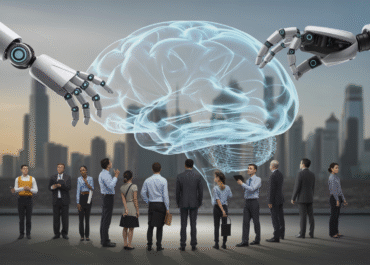The Dual-Edged Sword: Exploring AI's Profound Impact on Education
Artificial intelligence (AI) is rapidly transitioning from a futuristic concept to a present-day reality, reshaping industries across the globe. Education, being a cornerstone of societal progress, is no exception. The integration of AI tools promises a new era of learning – one that is more personalized, efficient, and accessible. However, like any powerful technology, AI’s foray into the classroom comes with its own set of significant challenges and ethical considerations that demand careful navigation.
The Transformative Potential of AI in Education
AI’s capacity to process vast amounts of data and identify patterns offers groundbreaking opportunities for enhancing the learning experience:
- Personalized Learning Pathways: AI algorithms can analyze individual student performance, identify learning gaps, and adapt curricula in real-time. This allows for truly personalized educational experiences, where content and pace are tailored to each student’s unique needs, maximizing engagement and comprehension.
- Automation of Tedious Tasks: For educators, AI can be a powerful assistant, automating administrative burdens such as grading, attendance tracking, and even drafting lesson plans. This frees up valuable time, allowing teachers to focus more on direct student interaction, mentorship, and pedagogical innovation.
- Intelligent Tutoring Systems: AI-powered tutors can provide immediate feedback, answer questions, and offer tailored explanations or practice problems around the clock. These systems can supplement traditional teaching, providing students with constant support and reinforcement.
- Optimizing Institutional Resources: Beyond the classroom, AI can help educational institutions manage resources more efficiently. By analyzing data on enrollment, facility usage, and course demand, AI can inform better decision-making, leading to optimized schedules, reduced costs, and more sustainable operational models.
Navigating the Challenges and Concerns
Despite its promising potential, the widespread adoption of AI in education brings forth several critical concerns that need proactive solutions:
- Privacy and Data Security: AI systems collect immense amounts of student data, from academic performance to behavioral patterns. Ensuring the privacy and secure handling of this sensitive information is paramount to prevent misuse and maintain trust.
- Equity and Access: The digital divide could be exacerbated by AI. Not all students or institutions have equal access to the necessary technology, infrastructure, or training to leverage advanced AI tools effectively, potentially widening existing educational inequalities.
- Diminished Human Connection: While AI can personalize learning, it cannot fully replicate the nuanced empathy, emotional support, and social interaction crucial for holistic student development that human teachers provide. The classroom remains a vital space for social learning.
- Over-reliance and Dependence: An excessive reliance on AI tools might hinder students’ ability to develop independent problem-solving skills, critical thinking, and the resilience needed to grapple with complex challenges without immediate technological assistance.
- Impact on Critical Thinking: If AI provides instant answers or generates content, there’s a risk that students might bypass the rigorous process of research, analysis, and synthesis, potentially diminishing their capacity for deep critical thinking.
- Academic Dishonesty: The sophistication of generative AI tools poses new challenges for academic integrity. Distinguishing between original student work and AI-generated content becomes increasingly difficult, necessitating new approaches to assessment and academic policy.
AI’s journey in education is still in its nascent stages, yet its profound impact is undeniable. To truly harness its power for a more effective and equitable future, stakeholders must engage in thoughtful dialogue, develop robust ethical guidelines, and implement balanced strategies that leverage AI’s strengths while safeguarding the irreplaceable human elements of teaching and learning. The goal is not to replace educators, but to empower them, ensuring that technology serves to enhance, rather than diminish, the rich tapestry of the educational experience.


